26 Exotic Caribbean Fish Dishes to Transport Your Taste Buds
Caribbean fish dishes represent a vibrant culinary tradition bursting with bold flavors and cultural heritage.
Ocean-fresh ingredients dance across plates, telling stories of islands and maritime traditions.
Seafood plays a central role in regional cooking, connecting communities through generations of shared recipes.
Coastal communities have perfected techniques that transform simple catches into extraordinary meals.
Techniques passed down through families reveal deep connections to marine environments and agricultural landscapes.
Sophisticated yet rustic preparations showcase the incredible diversity of regional cooking styles.
The fusion of indigenous, African, European, and Asian influences creates remarkable gastronomic experiences.
These 26 authentic Caribbean fish dishes will transport you to sun-drenched shores and bustling markets:
Authentic Caribbean Fish Dishes Packed with Spice
Caribbean kitchens make the most of ocean treasures, marinating fish with bold spices and tropical flavors. Each bite brings sun, sea, and a festive island spirit.
Bake And Shark
Bake and shark represents Trinidad's bold street food culture, featuring fresh shark meat quickly deep-fried and nestled inside soft, warm flatbread with zesty condiments.
This popular Caribbean dish originates from Maracas beach, where numerous street vendors serve it during festivals and beach celebrations.
Local cooks season shark pieces with aromatic spices before frying them to crispy perfection.
Hungry beachgoers load their bakes with diverse toppings like pepper sauce, mango chutney, and fresh vegetables.
Vendors prepare each sandwich quickly, making it a favorite grab-and-go meal for locals and tourists.
Travelers seek out this unique street food experience as a must-try Trinidadian culinary adventure.
Fresh ingredients and quick preparation define its appeal.
Trinidad's rich coastal food tradition shines through this simple yet flavorful dish.
Escovitch Fish
Escovitch fish electrifies Jamaican cuisine with its bold, tangy flavor profile of deep-fried fish topped with a zesty vinegar-based sauce.
Jamaican families traditionally prepare this vibrant dish during Easter celebrations, selecting firm-bodied fish like red snapper, mullet, or king fish for maximum taste.
Salt and pepper season the fish before frying it to crispy golden perfection.
Colorful bell peppers, carrots, and onions create a spicy pickled sauce that complements the crisp fish exterior.
Vinegar provides a sharp, acidic punch that cuts through the fish's richness.
Home cooks marinate the vegetables to intensify their flavor before pouring the sauce over the hot fried fish.
Restaurants and street vendors across Jamaica serve this iconic seafood dish as a popular lunch or dinner option.
Many Jamaican food lovers believe escovitch fish tastes even more delicious when enjoyed the next day, allowing flavors to develop further.
Ackee And Saltfish
Ackee and saltfish epitomizes Jamaica's rich culinary heritage, blending West African ackee fruit with salted fish in a unique national dish.
Jamaicans savor this protein-packed meal for breakfast, lunch, or dinner, celebrating its complex flavors and cultural significance.
Originating in the 18th century, the dish features a potentially toxic fruit that becomes edible only when its yellow flesh and black seeds fully emerge.
Carefully prepared cod, mahi mahi, or mackerel complement the creamy ackee, creating a balanced and nutritious combination.
Smooth and reddish in appearance, the ackee resembles a peach before cooking.
Jamaican home cooks traditionally sauté the ingredients with aromatic seasonings like onions and peppers.
Imported from West Africa, this ingredient transforms simple fish into a memorable meal.
Regional variations showcase the dish's adaptability across different Jamaican communities.
Brown Stew Fish
Brown stew fish mesmerizes Caribbean cuisine with its rich, deep-flavored sauce and perfectly prepared seafood.
Jamaican kitchens transform fresh fish fillets through a meticulous marinating and frying process that creates an intensely flavorful dish.
Cooks typically select white fish like snapper or grouper and season it with aromatic spices before frying to golden perfection.
Onions, garlic, ginger, and tomatoes form the robust base of the signature brown sauce that coats each tender fish piece.
Hot peppers and thyme add layers of complexity and traditional Jamaican zest to the stew.
Butter and water help create the distinctive brown color and silky texture of the sauce.
Rice and peas or yams and bananas traditionally accompany this beloved island meal.
Salt and black pepper provide final seasoning touches that elevate the entire culinary experience.
Saltfish Buljol
Saltfish buljol represents Trinidad's bold breakfast cuisine, featuring salted fish thoroughly soaked and boiled before mixing with spicy peppers, sweet peppers, tomatoes, and oil.
Caribbean kitchens transform this protein-packed dish into a sandwich by nestling the seasoned fish inside warm bake bread.
Hot scotch bonnet peppers add fiery intensity to the mixture, creating an explosive flavor profile.
Trini cooks carefully break down the fish into small, manageable pieces during preparation.
Root vegetables called provisions frequently accompany this morning meal as a complementary side dish.
Onions contribute additional depth and sharpness to the overall taste.
Regional cooking techniques ensure each ingredient blends seamlessly for maximum taste impact.
Fresh ingredients make this traditional breakfast a memorable culinary experience that energizes diners for their day.
Jamaican Steamed Fish
Jamaican steamed fish represents a zesty seafood preparation featuring snapper slowly cooked in a spicy butter sauce with fresh vegetables and herbs.
Sea salt and garlic generously season firm white fish before simmering with chopped tomatoes and onions.
Scotch bonnet chilis provide an intense heat that elevates the entire dish's flavor profile.
Fresh thyme and black pepper add aromatic depth to the sauce's complexity.
Jamaicans traditionally serve this protein-rich meal with complementary sides like rice, boiled bananas, and crispy crackers.
Restaurants and home kitchens across Jamaica prepare this dish as a nutritious and satisfying lunch or dinner option.
Steaming ensures the fish remains tender and absorbs maximum sauce flavor.
Regional variations might include slight adjustments to seasoning and specific fish selections.
Fish Tea
Jamaican fish tea stands as a distinctive, flavorful broth bursting with Caribbean seafood essence and aromatic herbs.
Small, affordable fish like herrings form its protein base, complemented by bell peppers, carrots, onions, and green bananas for robust flavor complexity.
Jamaicans traditionally prepare this light soup with salt, pepper, and thyme, creating a delicate yet satisfying dish.
Beachside shacks and local eateries frequently serve this nutritious broth throughout the island.
Some Jamaicans believe the soup possesses strong aphrodisiac properties, adding mystique to its culinary reputation.
Unlike dense Jamaican soups, fish tea offers a lighter, more refreshing alternative for seafood lovers.
Regional variations might include different fish types or additional spices depending on specific community traditions.
Island residents consider this soup a comforting and nourishing meal that reflects Jamaica's rich maritime culinary heritage.
Fish Broth
Fish broth stands out as a hearty Trinidad and Tobago soup brimming with fresh fish, aromatic herbs, and tender vegetables.
Carefully seasoned fish transforms this broth into a rich, warming meal traditionally served as a main course unlike soups in other cuisines.
Home cooks and restaurants create unique versions by experimenting with different marinades and seasoning techniques.
Fresh herbs and selected vegetables contribute depth to the complex flavor profile.
Fish selection plays a crucial role in determining the broth's overall taste and quality.
Pasta or dumplings add substance and texture to the dish.
Reheating often enhances the broth's flavor, making it even more delicious the next day.
Flying Fish Cutters
Flying fish cutters are Barbados' iconic handheld seafood sandwiches bursting with fresh Caribbean flavors and local culinary tradition.
Bajan salt bread forms the crispy exterior base for this beloved street food, featuring a tender, fluffy white flour roll.
Fishermen carefully prepare flying fish fillets by soaking them in lime juice and salt before seasoning with spicy herbs like scotch bonnet peppers, thyme, and garlic.
Skilled cooks fry the seasoned fish to golden perfection before nestling the crisp fillet inside the soft bread roll.
Fresh vegetables like tomatoes, cucumbers, and lettuce add crunch and brightness to the sandwich.
Street vendors and beachside restaurants across Barbados serve these portable meals as quick, satisfying lunch options.
Tourists and locals alike relish this simple yet flavorful sandwich that captures maritime island cuisine.
Pwason Boukannen
Pwason boukannen represents a traditional Haitian grilling method where fresh fish transforms into a smoky delicacy through an ancient wood-fire technique.
Fishermen carefully slice and season their catch with simple spices like salt, pepper, and chili peppers before securing it between split wooden planks.
Cinnamon sticks often enhance the fish's flavor during the slow-cooking process.
Boukan, the traditional grilling method, involves tying one end of a wooden plank while leaving the other open to hold the fish.
Skewers run through the fish from mouth to tail, ensuring even cooking over an open flame.
Local Haitians have practiced this technique for generations, preserving their culinary heritage.
Wooden planks create a natural grill that infuses the fish with rich, smoky notes.
Pwason boukannen emerges as a rustic, flavorful dish that celebrates Haiti's coastal cooking traditions.
Roasted Breadfruit And Fried Jackfish
Roasted breadfruit and fried jackfish are Saint Vincent and the Grenadines' iconic island meal combining coastal fishing traditions with agricultural abundance.
Locals prepare whole breadfruit by roasting it over open flames until its exterior turns charred while maintaining a soft, tender interior.
Fishermen catch fresh jackfish and fry them to golden crispiness as a complementary protein to the starchy breadfruit.
Vincentian families typically serve this dish as a hearty lunch option highlighting regional ingredients.
Salt and pepper seasonings enhance the fish's natural flavors.
Regional cooking methods reflect generations of culinary expertise passed through island communities.
Native ingredients create a simple yet satisfying meal representing Caribbean food culture.
Traditional preparation techniques showcase the connection between sea and land in Saint Vincent's cuisine.
Jamaican Mackerel Rundown
Mackerel rundown represents a hearty Jamaican seafood specialty combining salted or pickled mackerel with a creamy coconut milk sauce simmered until custard-like.
Rich coconut milk creates the signature thick base while absorbing complex flavor profiles from traditional seasonings like scotch bonnet peppers, garlic, black pepper, scallions, and thyme.
Caribbean kitchens transform fresh mackerel into a satisfying meal by slowly reducing the sauce until it reaches a dense, almost gravy-like consistency.
Jamaican home cooks prepare this dish as a popular breakfast or lunch option with deep roots in island culinary traditions.
Fishermen likely developed the recipe as an efficient way to use preserved fish and readily available coconut milk.
Salt-preserved mackerel provides intense flavor and protein to the dish.
Coastal communities originally crafted this recipe as a practical and nutritious meal.
Jamaican families continue to enjoy mackerel rundown as a comforting and flavorful staple of their cuisine.
Balchi Di Piska
Balchi di pisca are savory Caribbean fish cakes originating from Curacao and Aruba, crafted with white-flesh fish like cod, grouper, or red snapper.
Local fishermen traditionally prepare these crispy patties by mixing fresh fish with herbs and spices.
Carefully blended ingredients create a golden-brown exterior that crunches with each bite.
Salmon and mahi-mahi offer delicious alternative fish options for the recipe.
Home cooks typically season the fish with local spices before binding it with breadcrumbs.
Salt and pepper enhance the natural seafood flavor of these compact, flavorful bites.
Caribbean families often serve balchi di pisca as appetizers or light meal accompaniments.
Street vendors and home kitchens across the islands continue to preserve this beloved culinary tradition.
Pargo Relleno
Pargo relleno delivers a mouthwatering Caribbean seafood experience featuring red snapper transformed through strategic stuffing and marinading techniques.
Cuban and Costa Rican coastal regions prize this dish for its complex flavor profile and elegant preparation method.
Fresh red snapper serves as the primary protein, generously seasoned with salt, pepper, lemon juice, and garlic before receiving a robust vegetable treatment.
Chefs carefully stuff the fish with select ingredients and layer green pepper rings and onions across its surface.
Marination occurs for several hours, allowing flavors to deeply penetrate the fish's delicate flesh.
Regional cooking traditions emphasize precise temperature control and careful handling during preparation.
Grilling or baking methods complete the cooking process, ensuring a succulent final presentation.
Mediterranean and Latin American culinary influences merge in this spectacular seafood creation.
Bahamian Stew Fish
Bahamian fish stew represents a hearty maritime cuisine blending fresh seafood with rustic island ingredients.
Local fishermen traditionally prepare this rich dish using snapper or grouper as the primary protein.
Flour is carefully browned in oil to create a thick, flavorful base for the stew.
Fresh vegetables like onions, carrots, and potatoes add depth and texture to the broth.
Tomato paste contributes a tangy undertone that complements the fish's natural flavors.
Spices enhance the overall taste profile, creating a complex and satisfying meal.
Sea-to-table cooking methods involve first browning the fish before integrating it with the vegetable and flour mixture.
Saltfish With Cabbage
Saltfish with cabbage represents Jamaica's hearty culinary heritage, combining flaked salt cod with fresh vegetables in a one-pot meal packed with bold Caribbean flavors.
Jamaican home cooks expertly blend steamed cabbage with tender saltfish, creating a nutrient-dense dish that balances salty seafood and crisp vegetables.
Salt cod forms the protein base, imported historically from Atlantic Canadian fisheries and preserved through traditional salting techniques.
Scallions, garlic, and onions provide aromatic depth to the preparation, while tomatoes and bell peppers add vibrant color and subtle sweetness.
Red chili flakes introduce a gentle heat that complements the fish's saltiness, enhancing the overall taste profile.
Thyme contributes an earthy herbal note that grounds the dish's complex flavors.
Home cooks typically steam the cabbage to maintain its nutritional value and texture, ensuring a light yet satisfying meal.
Abaco Baked Grouper
Abaco baked grouper crowns Bahamian seafood cuisine with its rich, flavorful preparation of fresh ocean fish nestled in aromatic vegetables.
Fishermen from Abaco islands carefully select prime grouper fillets as the star ingredient for this classic dish.
Cooks season the fish with simple yet powerful ingredients like salt, pepper, and local spices.
Chopped onions, tomatoes, and bell peppers create a vibrant base that enhances the fish's natural flavors.
Oil helps blend the ingredients and provides a smooth cooking medium for the fish and vegetables.
Traditional preparation involves gently cooking the vegetable mixture before adding the grouper fillets.
Baking ensures the fish remains moist and absorbs the surrounding vegetable essence.
Families often serve this dish with rice or traditional Bahamian side dishes for a complete meal.
Green Fig And Saltfish
Green fig and saltfish are Saint Lucia's national treasure combining unripe bananas (called "figs" locally) with salted cod in a flavorful Caribbean fusion.
Caribbean islanders transformed this humble slave-era dish into a celebrated meal featuring affordable, nutritious ingredients.
Bananas in this recipe resemble potatoes more than sweet fruits, providing a starchy base for the salty fish.
Cod traditionally serves as the primary protein, though other salty fish work equally well.
Historical records suggest slaves originally created this dish using inexpensive, preserved fish and locally grown bananas.
Boiling becomes the primary cooking method for both fish and bananas before sautéing with aromatic ingredients like onions, garlic, cabbage, peppers, and tomatoes.
Spices and condiments elevate the simple ingredients into a complex, satisfying meal.
Maritime preservation techniques like salting fish helped develop this iconic Caribbean recipe.
Bajan Macaroni Pie And Flying Fish
Macaroni pie stands as Barbados' beloved comfort food, a rich baked pasta casserole featuring tubular macaroni blended with creamy cheese, butter, and eggs.
Island kitchens transform basic ingredients into a spicy, golden-crusted dish that celebrates Caribbean culinary traditions.
Mustard and ketchup add complex flavor layers to the creamy base, while breadcrumbs and extra grated cheese create a crispy, golden topping.
Red pepper sauce or cayenne pepper introduces a signature warmth that elevates the entire dish.
Onions provide subtle depth and aromatic undertones to the cheese mixture.
Milk ensures a smooth, creamy texture throughout the baked casserole.
Home cooks and restaurants across Barbados serve this hearty side dish at family gatherings and casual meals.
Macaroni pie reflects the island's love for bold, satisfying flavors and simple, resourceful cooking.
Coo-Coo And Flying Fish
Coo-coo represents a smooth cornmeal and okra blend from Barbados that demands precision during preparation.
Sailors and fishermen traditionally consumed this national dish alongside flying fish, which symbolizes Barbadian maritime culture.
Traditional preparation requires constant stirring to eliminate lumps, with folklore suggesting husbands could divorce wives who failed to create a perfectly smooth texture.
Flying fish, small silver-blue creatures with dragonfly-like fins, complement the cornmeal base after being carefully filleted and seasoned with onions, parsley, thyme, garlic, red pepper, salt, paprika, and lime juice.
Barbadian boats specifically designed for catching these fish ensure fresh ingredients for this iconic meal.
Sauce Creole often accompanies the dish, enhancing its savory profile.
Regional cooking techniques transform simple ingredients into a complex, flavorful experience that reflects Barbados' culinary heritage.
Maritime traditions and careful preparation make coo-coo more than just a meal—it's a cultural statement.
Dominican Stewed Cod (Bacalao Guisado)
Bacalao guisado represents a classic Dominican fish stew combining salted cod with vibrant Caribbean ingredients.
Spanish colonial culinary traditions shaped this hearty meal featuring tender salted cod rehydrated through overnight soaking.
Dominican kitchens transform the preserved fish into a rich, flavorful dish simmered with aromatic vegetables like garlic, onions, and bell peppers.
Olive oil creates a smooth base for the stew, while tomatoes and tomato paste develop deep, complex flavors.
Skilled cooks carefully boil the cod before integrating it with sautéed vegetables, ensuring perfect texture and taste.
Salt and spices enhance the natural seafood essence, making this dish a staple in Dominican home cooking.
Regional variations might include potatoes or additional seasonings, reflecting local preferences.
Every bite tells a story of cultural culinary heritage and maritime traditions.
Red Snapper A La Santa Barbara
Red snapper a la Santa Barbara dazzles seafood lovers with its crispy coconut-crusted fish and zesty sauce, highlighting Cuba's coastal culinary traditions.
Cuban fishermen perfected this recipe by combining fresh red snapper with a unique breading technique that creates a golden, crunchy exterior.
Shredded coconut provides an unexpected textural element that elevates the fish's natural flavor profile.
Home cooks carefully coat the fish fillets in flour and beaten eggs before rolling them in coconut flakes.
Frying transforms the fish into a crisp, golden delicacy that pairs perfectly with a tangy accompanying sauce.
Restaurants throughout Cuba serve this dish as a celebration of maritime ingredients and cooking techniques.
Fresh parsley often garnishes the plate, adding a bright green contrast to the golden-brown fish.
Coastal communities traditionally enjoy this dish as a signature seafood preparation that showcases the region's rich culinary heritage.
Stewed Saltfish With Spicy Plantains, Coconut Dumplings And Seasoned Breadfruit
Saltfish stew represents Saint Kitts and Nevis' rich culinary heritage through its complex preparation and diverse ingredients.
Caribbean fishermen traditionally dry cod into saltfish, which becomes the stew's primary protein after soaking and boiling.
Onions, garlic, and tomatoes slowly simmer with the fish to create a deeply flavorful base.
Crispy fried plantains coated in chili peppers add spicy contrast to the dish's texture.
Boiled dumplings made from flour and grated coconut provide additional substance and traditional Caribbean flair.
Sautéed breadfruit seasoned with thyme, parsley, and red peppers introduces another layer of aromatic complexity.
Kitchen teams carefully prepare each component separately before combining them into one harmonious meal.
Recent national competitions selected this saltfish stew as a modern representation of Saint Kitts and Nevis' gastronomic identity.
Blaff
Blaff is a zesty Caribbean seafood dish bursting with bold flavors from St.
Vincent and The Grenadines.
Fishermen traditionally prepare this vibrant recipe using fresh cod or sea bass marinated in a tangy blend of lime juice, hot peppers, and parsley.
White wine, oil, and aromatic spices like thyme, allspice, and cloves infuse the fish with complex flavor profiles.
Island cooks carefully simmer the marinated fish in a flavorful sauce for about twenty minutes, allowing the ingredients to meld together seamlessly.
Fresh herbs and spices play a crucial role in creating its unique taste.
Minced onions and garlic add depth to the marinade, while the final garnish of parsley provides a bright, fresh finish.
Caribbean seafood lovers appreciate this simple yet robust dish for its intense and refreshing taste.
Each bite transports you to the warm, sunny shores of St.
Vincent with its authentic island essence.
Bahamian Boiled Fish
Bahamian boiled fish represents a soul-warming seafood staple highlighting Nassau grouper's delicate flavor through a simple yet masterful cooking method.
Rich maritime traditions infuse this classic Caribbean dish with layers of spice and freshness from lime, thyme, and hot peppers.
Fishermen's families perfected this one-pot meal by gently simmering white fish with potatoes, garlic, and bay leaves until tender flakes emerge.
Allspice and cloves add deep warmth to the broth's complex profile.
Hot habanero peppers provide subtle heat that dances across your palate.
Salt and pepper balance the fish's natural sweetness.
Onions and celery contribute earthy undertones to the liquid base.
Generations serve this comforting dish alongside grits or johnnycakes, transforming a humble ingredient into a memorable culinary experience.
Smudder Fish
Smudder fish epitomizes Bahamian seafood cuisine with its simple yet flavorful preparation of white fish bathed in zesty lime juice and aromatic ingredients.
Fresh white fish receives a generous butter coating before being layered with crisp onion rings and juicy tomato slices.
Coriander adds subtle herbal notes that complement the fish's delicate texture.
Lime juice provides a bright, tangy marinade that tenderizes and enhances the seafood's natural flavors.
Bahamian home cooks traditionally bake this dish in a pan until the fish becomes perfectly cooked and tender.
Butter creates a rich, silky sauce that melds all ingredients together.
Rice and seasonal vegetables typically accompany this classic island meal.
Families across the Bahamas enjoy smudder fish as a comforting and straightforward seafood dinner.
Are Acidic Marinades Necessary for Every Caribbean Fish Dish?
Acidic marinades - often made with lime, lemon, or vinegar - are common in Caribbean fish recipes but not always essential. These marinades help tenderize the fish and add a bright, tangy flavor that complements the tropical palate.
However, some traditional dishes rely more on herbs, spices, or smoky cooking methods like grilling or smoking, where acidity plays a less prominent role. So while acidic marinades enhance many Caribbean fish dishes, they aren’t mandatory for every recipe.
Can You Prepare Caribbean-Style Fish Without Spicy Seasonings?
Absolutely! Caribbean cuisine is known for its bold spices and heat, but many flavorful fish dishes can be made mild or without spicy seasonings.
Using aromatic herbs like thyme, scallions, and garlic, along with citrus and coconut-based sauces, can deliver authentic Caribbean flavors without the burn.
Techniques like slow cooking, smoking, or baking with flavorful but mild ingredients allow you to enjoy Caribbean-style fish even if you prefer less spice.

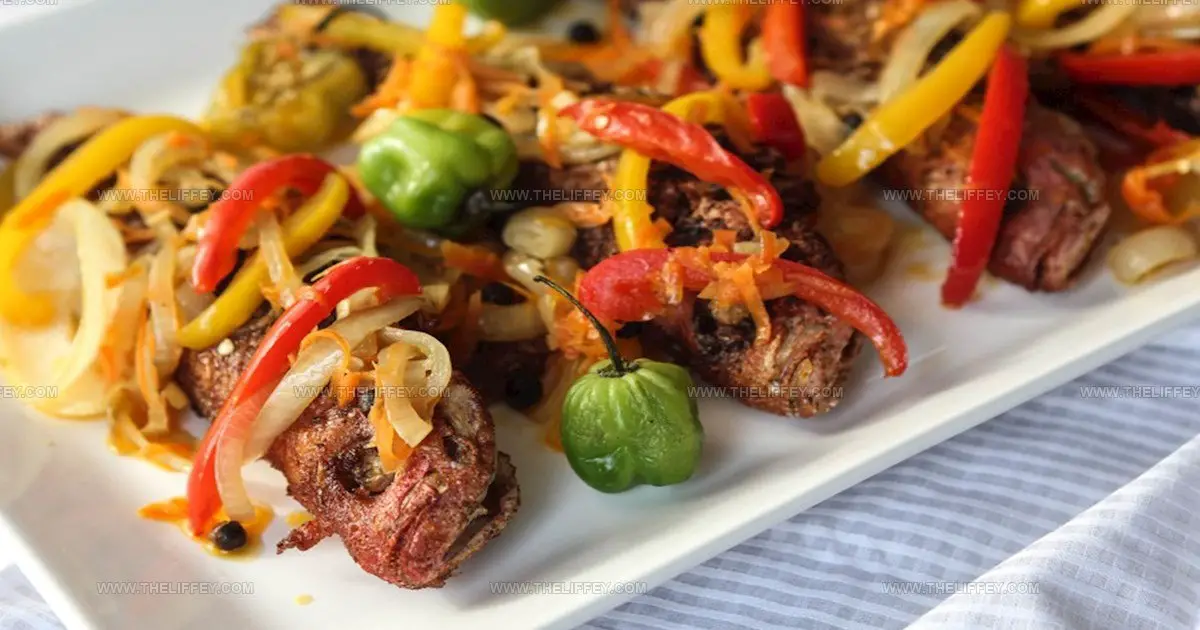

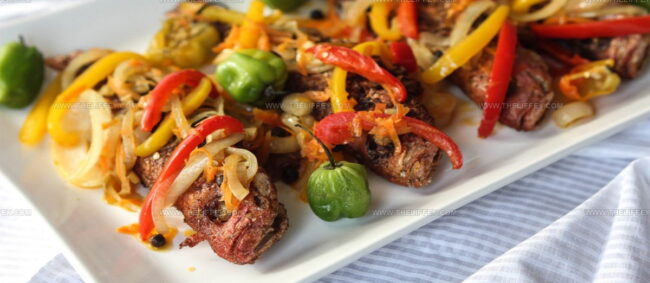
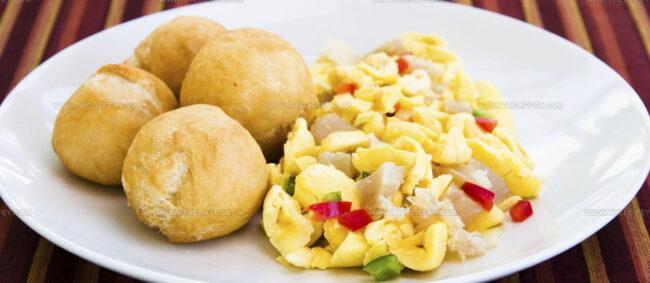

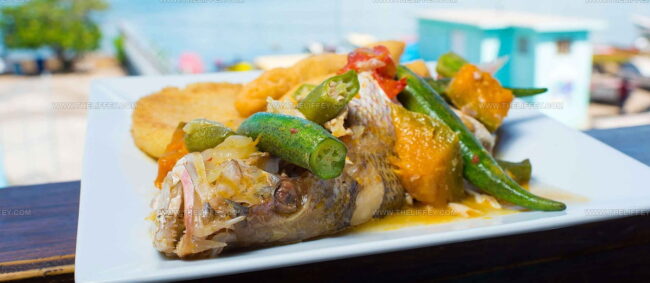

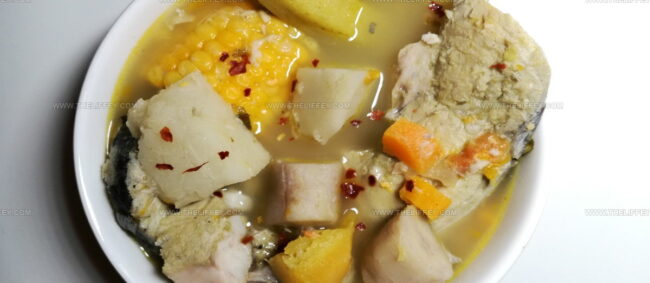
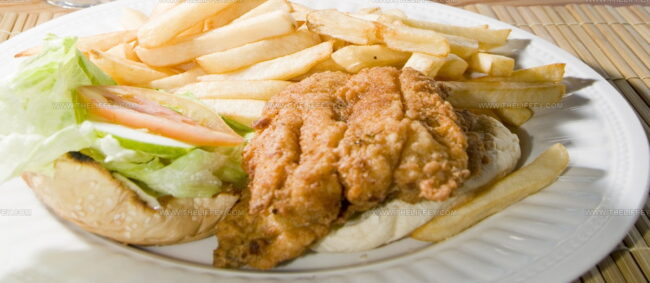
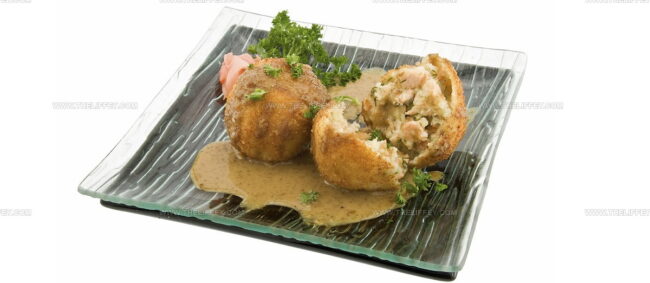
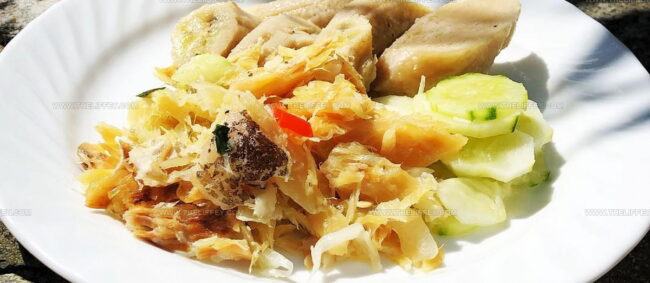
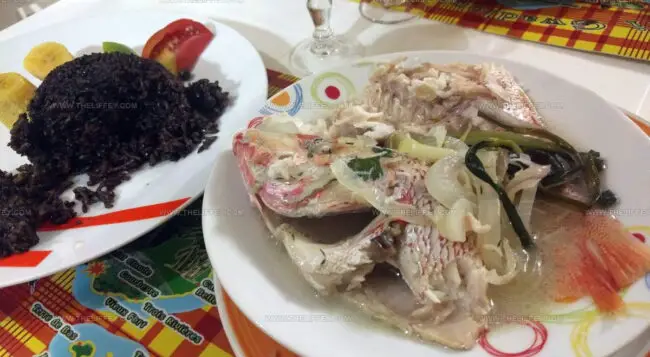
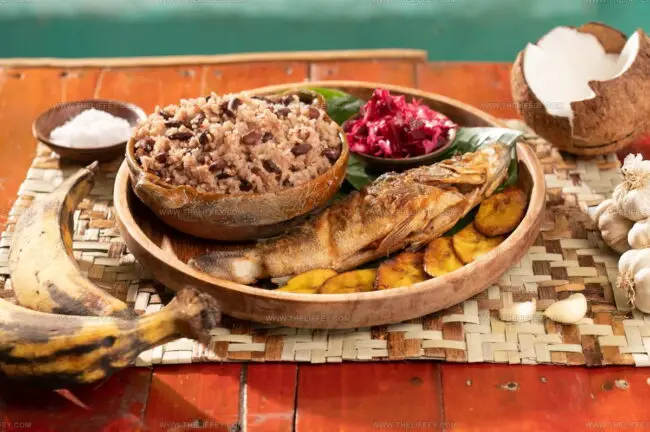
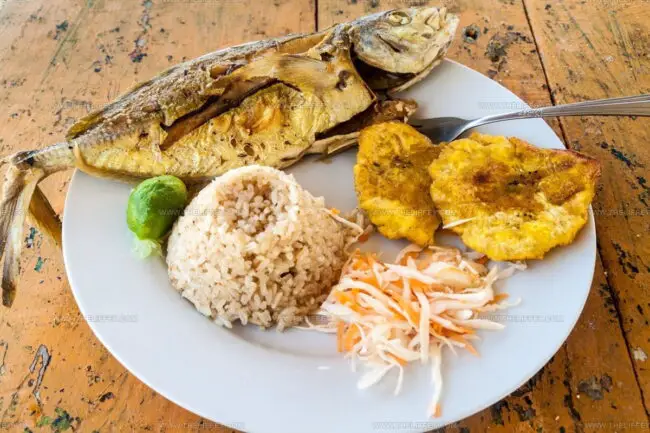
Amanda Bennett
Recipe Curator & Culinary Educator
Expertise
Baking and Pastry Arts, Recipe Testing and Development, Culinary Instruction, Food Styling and Photography
Education
Asheville-Buncombe Technical Community College, Asheville, NC
Diploma in Culinary Arts
Emphasized practical cooking skills, nutrition, and kitchen management.
Cambridge School of Culinary Arts, Cambridge, MA
Certificate in Professional Pastry Arts
Specialized in baking techniques, dessert presentation, and flavor profiling
Amanda’s roots run deep in the Southern hills, where every meal started fresh from the garden and every dessert came with a story. She trained at Asheville-Buncombe Technical Community College and sharpened her pastry skills at the Cambridge School of Culinary Arts, blending classic technique with everyday charm.
At The Liffey, Amanda’s passion is making baking and home cooking feel natural and joyful. She’s all about single recipes that are simple enough for a busy afternoon, but special enough to make someone’s day a little sweeter.